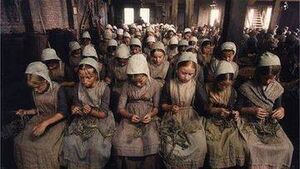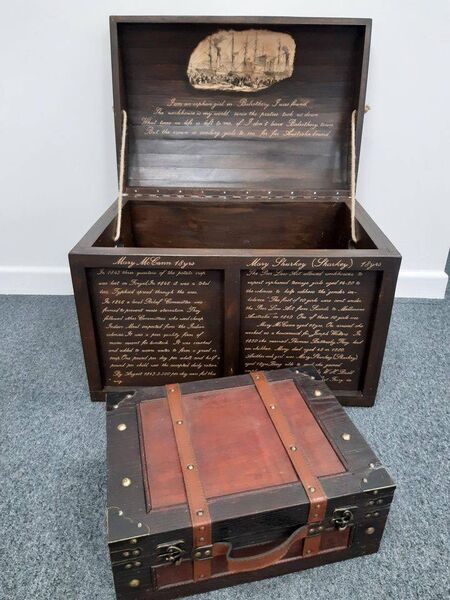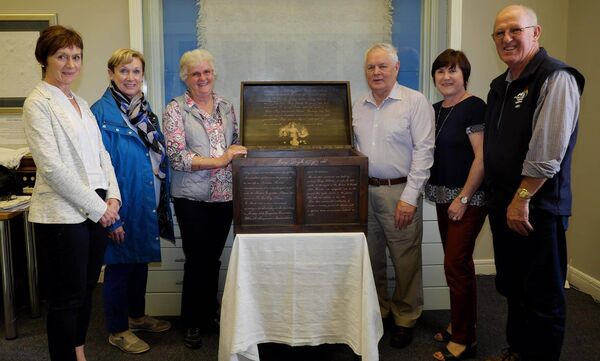History seminar on Irish Famine and Earl Grey Scheme in Laois

Young girls in the workhouses who were shipped out to Australia as part of the Earl Grey Scheme between 1848-1850
AS part of the 2025 National Famine Commemoration a one day history seminar will be held in Mountmellick Museum.
The event is free to attend and will take place on Saturday 24 May from 10am to 4pm.
A week long programme of events is underway across the country to mark this year’s National Famine Commemoration, which looks back on the catastrophic events of the famine and how it affected every part of Ireland in the generations that followed.
The event in Mountmellick Museum will focus on the more than 400 famine orphan girls who were taken from Irish workhouses and shipped to Australia as part of the Earl Grey Scheme between 1848-1850.
The free event is hosted by Mountmellick Development Association with support from Laois Heritage Office and the National Federation of Local History Societies.
Speakers on the day include Dr. Patrick Fitzgerald from the Mellon Centre for Migration Studies. Paddy’s PhD research was on poverty and vagrancy in Early-Modern Ireland (1550-1770). He will talk about the orphan girls who originated in Ulster.
Irish novelist and short story writer Evelyn Conlon 2013 novel ‘Not the Same Sky’ tells the story of four orphan girls. It observes them on their voyage and follows them from Sydney as they become women of Australia.
Kerry based genealogist and author of ‘The Kerry Girls: Emigration and the Earl Grey Scheme’ Kay Caball will also discuss her work Cathy Fleming from the Celbridge Historical Society was part of a project to produce a short film on Celbridge orphan girl Bridget Dwyer. The film will be screened as part of the event.
The former Governor of Arbour Hill Prison Liam Dowling will speak on the prison project to produce replica Famine Boxes to commemorate the Earl Grey Scheme orphan girls.
Paddy Buggy from the Mountmellick Embroidery and Heritage Museum will discuss the Earl Grey Scheme orphan girls.

Famine boxes were wooden boxes given to each girl containing 6 shifts, a shawl, 2 pairs of shoes, 2 gowns, 2 wraps, 2 petticoats, 1 cloak, 2 neck scarves, 2 pocket handkerchiefs, 2 linen collars, 2 aprons, 1 pair of stays, 1 pair of mitts, 1 pair of sheets, I bonnet, day and night caps, 2 towels, 2 bars of soap, combs, brushes, needles & thread, a few yards of cotton or calico material, a bible, prayer book and rosary beads.
Between 1848 and 1850 over four thousand orphan girls aged between 14 and 18 years were shipped to Australia from workhouses throughout Ireland as part of the Earl Grey Scheme. Thirty-seven girls from the Mountmellick Workhouse and twenty-eight girls from the Abbeyleix Workhouse are listed as travelling under this scheme.
Places are free but booking is essential as places are limited. To book your place email annemcneill@yahoo.com

*The Earl Grey Scheme
While the name Earl Grey is synonymous with a popular blend of tea enjoyed across the globe, the man behind the name, the 19th-century UK Secretary of State for the Colonies, also played a significant role in Ireland's history. During the Great Famine of the 1840s, Earl Grey devised a scheme to transport thousands of young British and Irish orphan girls to Australia.
The British Governments response to the Great Famine was to do very little. Workhouses were built to house the desperately poor and starving. Conditions were brutal with disease and death rampant. Some ruthless landlords took advantage of the situation and cleared their lands of the poor with over one million emigrating to North America and Canada on what became known as the “coffin ships”. These poor people financed their own passage by whatever means they could.
In contrast the Earl Grey scheme differed in that the British Government funded the cost of the passage to Australia for a specific segment of the population, namely girls aged between fourteen and eighteen. One would like to think that their motives were pure but in fact their motives were to rebalance a gender imbalance which had occurred in Australia with the majority of those travelling down under being men. The scheme was open to girls from England, Scotland, Wales and Ireland. It was destitute girls from Ireland who made up the vast majority of those transported. Over four thousand one hundred girls set sail under this scheme from Ireland on a journey into the unknown which took up to one hundred and thirty days to complete. Interestingly out of this vast number of girls who travelled only one girl died during the trip. This was due to the British Government only paying the transport companies based on the number of girls who arrived alive. A stark contrast to those who travelled to North America on the “coffin ships”.
Girls from both the Abbeyleix and Mountmellick Workhouses travelled under this scheme to Australia and twenty percent of the current Australian population can trace their roots back to these four thousand Irish girls. These girls had been forgotten here in Ireland as many were orphans and had no one to tell their story but in recent years their story has come to light and it is only fitting that these girls are remembered and their role in building the modern day Australia is acknowledged.




